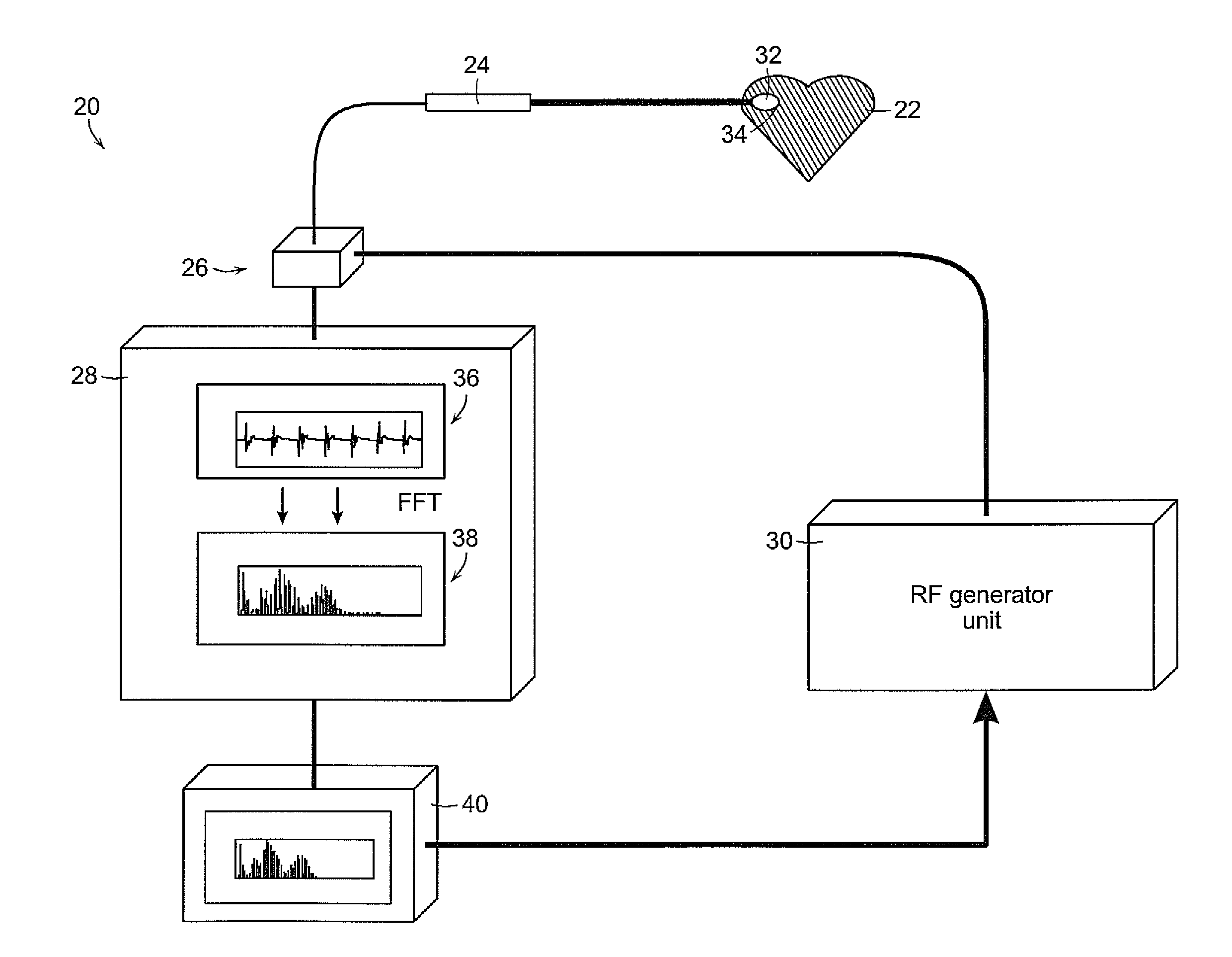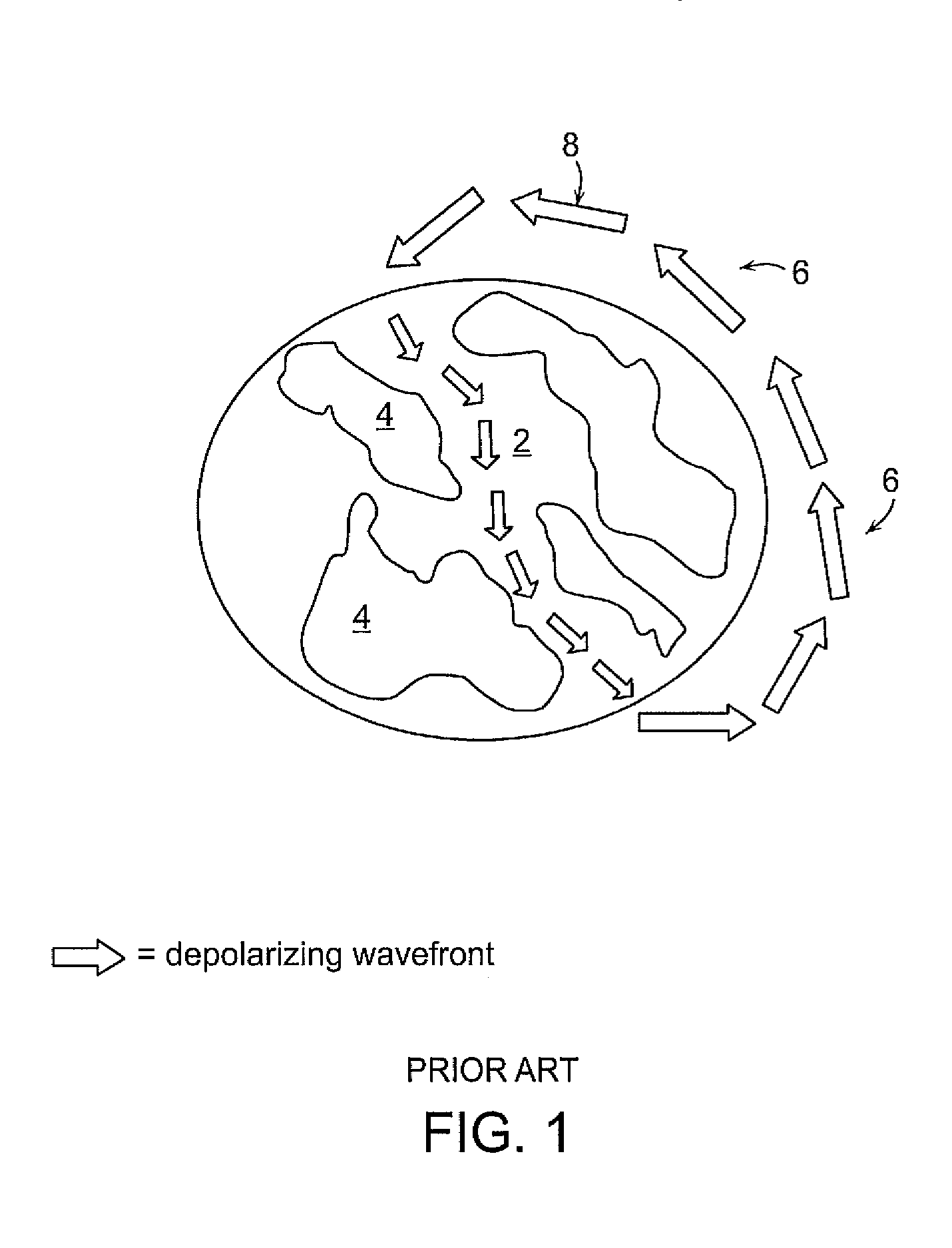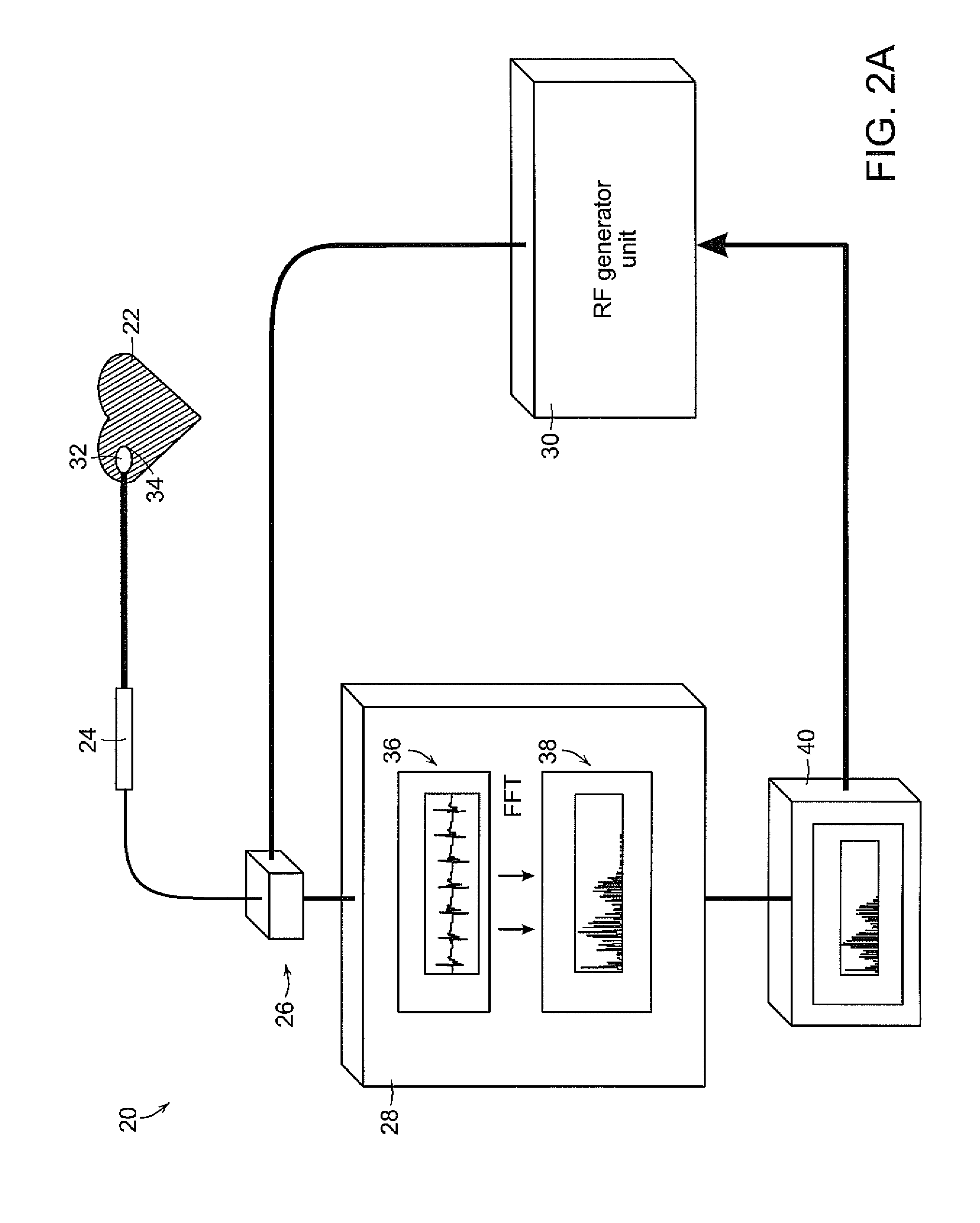Spectral analysis of intracardiac electrograms to predict identification of radiofrequency ablation sites
a radiofrequency ablation and electrogram technology, applied in the field of radiofrequency ablation, can solve problems such as ventricular systolic function
- Summary
- Abstract
- Description
- Claims
- Application Information
AI Technical Summary
Problems solved by technology
Method used
Image
Examples
Embodiment Construction
[0017]The invention provides a technique where spectral power distributions of electrograms recorded at ablation sites can be used to predict ablation sites most likely to result in ventricular tachycardia (VT) termination or termination of other reentrant tachycardia circuits in which the rapidly and slowly conducting limbs of the reentrant circuit lie in close physical proximity to one another.
[0018]FIG. 2A is a schematic diagram illustrating the inventive system 20 used in predicting ablation sites most likely to result in VT termination. VT is used as an example of a tachycardia circuit in which the rapidly and slowly conducting limbs of the reentrant circuit lie in close physical proximity to one another. The system 20 includes a catheter / ablation structure 24 having a probe 32 positioned on an ablation site 34 on a heart. The catheter / ablation structure 24 produces local intracardiac electrograms 36 recorded at the ablation site 34 and sends the recorded local intracardiac ele...
PUM
 Login to View More
Login to View More Abstract
Description
Claims
Application Information
 Login to View More
Login to View More - R&D
- Intellectual Property
- Life Sciences
- Materials
- Tech Scout
- Unparalleled Data Quality
- Higher Quality Content
- 60% Fewer Hallucinations
Browse by: Latest US Patents, China's latest patents, Technical Efficacy Thesaurus, Application Domain, Technology Topic, Popular Technical Reports.
© 2025 PatSnap. All rights reserved.Legal|Privacy policy|Modern Slavery Act Transparency Statement|Sitemap|About US| Contact US: help@patsnap.com



